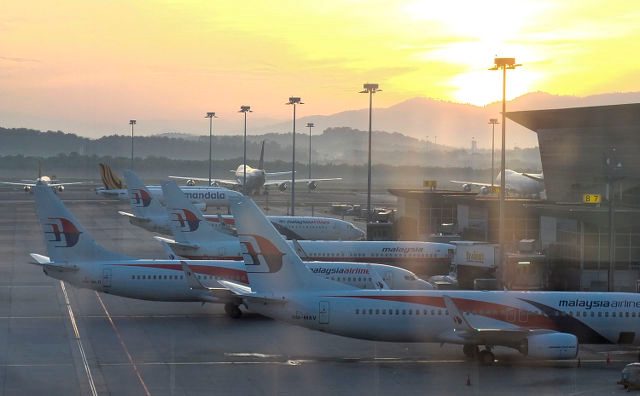SUMMARY
This is AI generated summarization, which may have errors. For context, always refer to the full article.

SEOUL, South Korea (UPDATED) – The downing of a Malaysia Airlines jet over rebel-held eastern Ukraine has raised questions over why the company persisted in flying in conflict-zone airspace that many other Asian carriers had abandoned months ago.
The air corridor over Ukraine has always been a crowded one for flights between Europe and Asia – particularly Southeast Asia – and re-routing around the airspace would mean an increase in flight time and fuel costs.
Nevertheless, a number of major Asian airlines, including South Korea’s Korean Air and Asiana, Australia’s Qantas and Taiwan’s China Airlines, said Friday that they had started avoiding the area as much as four months ago, when Russian troops moved into Crimea.
“We stopped flying over Ukraine because of safety concerns,” Asiana spokeswoman Lee Hyo-Min said.
Korean Air moved its flight paths 250 kilometers (160 miles) south of Ukraine from March 3 “due to the political unrest in the region”, an official for the carrier told Agence France-Presse.
A Qantas spokeswoman said its London to Dubai service used to fly over Ukraine, but the route was changed “several months ago”, while Taiwan’s China Airlines diverted its flights from April 3.
Hong Kong’s Cathay Pacific and Pakistan International Airlines said their flight paths had changed “some time” ago.
Singapore Airlines said it had been using Ukrainian airspace but had “re-routed all our flights” to alternative corridors away from the region.
It was not immediately clear when the route change was put into affect.
Philippine Airlines also said their flights to London – the carrier’s lone European destination – does not pass by Ukraine.
‘Safe’ flight path?
Asked why Malaysia Airlines had not taken similar precautions, Prime Minister Najib Razak said international air authorities had deemed the flight path secure.
“The International Air Transportation Association has stated that the airspace the aircraft was traversing was not subject to restrictions,” he said.
According to the European flight safety body Eurocontrol, the doomed plane was flying at a level known as “330”, or approximately 10,000 metres or 33,000 feet.
The route had been closed to level “320” but was cleared for those flying at the Malaysian plane’s altitude.
European and US airlines re-routed their flights as Kiev said flight MH17 was shot down in a “terrorist” attack, and a US official said intelligence analysts “strongly believe” it was downed by a surface-to-air missile.
Analysts were divided on whether carriers like Malaysia Airlines had been negligent in opting to continue flying over Ukraine.
“I just find it astonishing. I am absolutely flabbergasted,” said Geoff Dell, an air safety expert from the University of Central Queensland in Australia, told Sky News.
“If there’s trouble spots on the globe, then you take a decision to avoid that area,” Dell told Sky News.
“You don’t put your primary assets – your passengers, your crew, your airplane – at risk unnecessarily,” he added.
Assessing risk
But Gerry Soejatman, a consultant with the Jakarta-based Whitesky Aviation chartered flight provider, said every airline had its own level of risk assessment.
Flying above 30,000 feet is generally considered secure given the level of training and sophisticated weaponry required to shoot down a plane at that height, Soejatman said.
“Ten years ago you’d be an idiot to fly over Iraq below 15,000 feet, but over 30,000 feet was very safe, so it’s about the level of risk.
“I think this will send a message to airlines to have a closer look at conflict zones when they choose to fly over them and gain a better understanding of what equipment is on the ground,” he said.
Malaysia Airlines was not the only carrier that had persisted with the corridor over Ukraine.
Air India and Thai Airways said they had only decided to re-route their flights after the Malaysian crash.
Air China and China Eastern Airways had a total of 28 flights a week passing over eastern Ukraine, but China’s Civil Aviation Administration said Friday it had ordered all carriers to circumvent the region.
Vietnam Airlines said it had suspended four long-haul flights to Europe in the immediate aftermath of the Malaysia Airlines incident.
The flights resumed Friday, but on re-drawn routes that “completely avoid” eastern Ukraine, the airline said. – With reports from Rappler.com
Add a comment
How does this make you feel?
There are no comments yet. Add your comment to start the conversation.